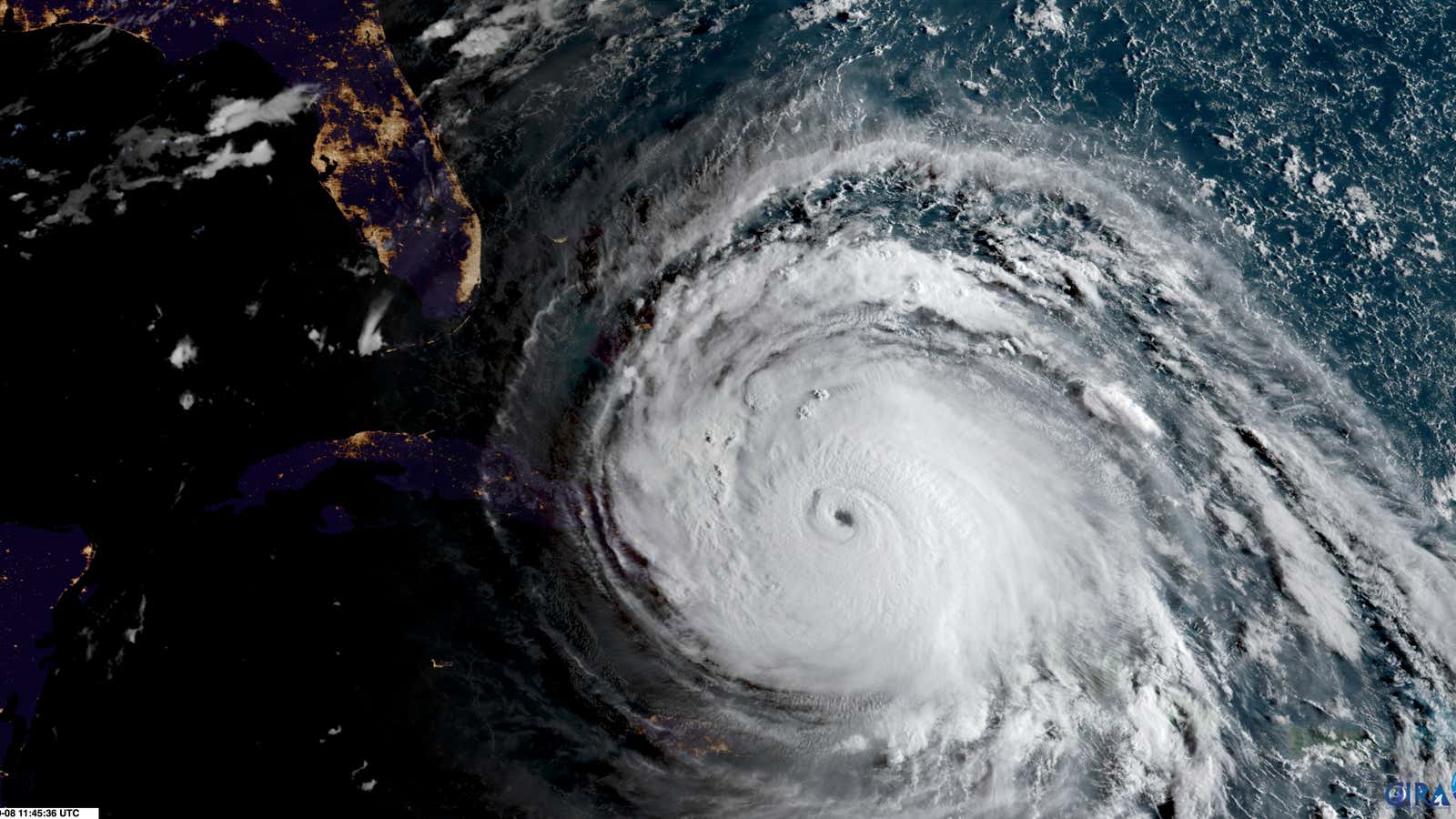Less than two weeks after Hurricane Harvey ravaged Texas, Hurricane Irma has ransacked the Caribbean islands, killing at least 24 people and impacting an estimated 1.2 million more as it barrels toward the southeastern US. Current predictions show Irma reaching the Florida Keys and South Florida by early Sunday (Sept. 10) as at least a Category 4 storm. The Miami International and Fort Lauderdale airports are overrun and the highways are jammed with traffic as residents from regions under mandatory evacuations try to escape before the storm.
Irma “is going to devastate the United States,” the US federal emergency agency head Brock Long said earlier today (Sept. 8). Parts of Florida alone will likely be without power for days, he added. Government personnel have also been deployed from Alabama to North Carolina to help prepare for the storm.
Fortunately, in the event of a days-long power outage, cellphone networks often keep working. A cellphone is also the one device that can both summon emergency services and let you know when it’s safe to come out. Here’s a refresher on the advice we provided for Harvey on how to keep it going even days after your home has lost power.
Before the power goes out
1. Buy a power pack
Pick up a phone power bank at a local convenience store, like a CVS or Walgreens. Different varieties can store enough power to recharge your phone anywhere from once to six or seven times. Once you’re home, make sure to keep it plugged into a charger until the power goes out.
2. Get a cellphone car charger
If you have a car (or a neighbor does) and don’t have a charger, get one. This will let you recharge if you’ve exhausted all the options below.
3. Fully charge your laptop, and save that charge for your phone
Your laptop battery is also just another power bank. To conserve its battery, shut down your laptop and keep it plugged into the wall until there’s no power. Later, you can charge your phone from its USB port, even when the laptop isn’t connected to a power outlet. To do that, you need to turn the laptop on, but close any running applications, dim the screen to nothing, and avoid using it for any other purpose.
4. Keep your phone plugged into the wall socket
Even if it’s fully charged, leave it plugged in.
When the power goes out
5. Turn off your phone’s radios
The radios—the wifi, bluetooth, and cellular receivers—are the biggest drain on battery life aside from the screen. Leave the phone connected to the cell network in case of emergency text messages or incoming calls, but if you don’t need to use the internet, turn off wifi. Also turn off bluetooth, which is only needed for connecting to things like wireless loudspeakers.
On an iPhone, these radios can be turned off by swiping up from the bottom bezel of your phone to open the “control center”: Here are instructions. On an Android device, you typically find the controls by swiping down from the top of the screen: Here are instructions.
Put the phone in airplane mode (no cellular contact) or turn it off entirely if you aren’t using it and aren’t anticipating anyone trying to reach you.
6. Turn off push notifications
Lots of apps send you notifications or alerts, and each one is a little extra drain on the battery. Here’s how to switch them off in Android and on the iPhone. (On an iPhone, you should also turn off “location services” which give your apps access to the phone’s location and also drain battery; you’re not going to need most of them in a hurricane.)
7. Turn off and restart your phone to kill all open apps
This ensures no unnecessary apps are running in the background, draining power.
8. Turn down the screen brightness
Most phones adjust their screen brightness automatically to the ambient light. Turn off this feature (Android instructions; iPhone instructions). Then turn the display brightness down to the lowest level at which you can still read it.
9. Send text messages instead of making phone calls
If you have to reach someone, texts use a lot less battery. Plus, they’re more likely to get through when the cell network is overwhelmed.
10. Don’t use your phone
This may seem obvious, but during an emergency, your phone is a crucial survival device. Resist the temptation to check email and post on social media; leave the phone alone except for periodic updates on the progress of the storm. Remember that if repair crews are overwhelmed, the power could be out for days.
